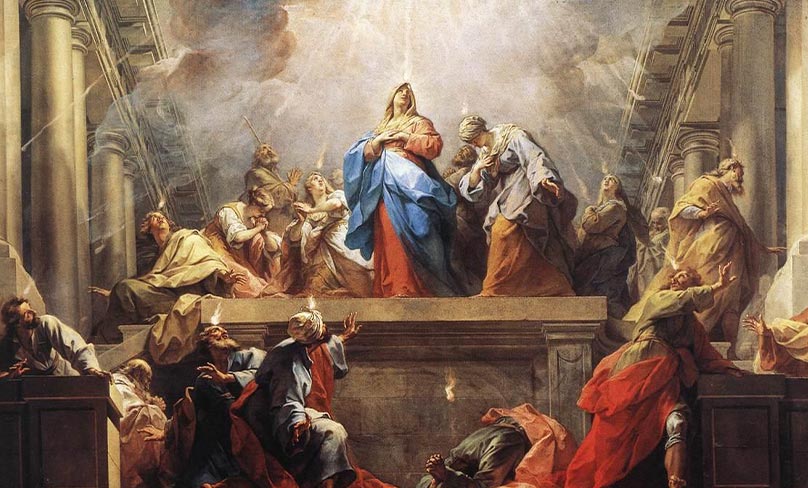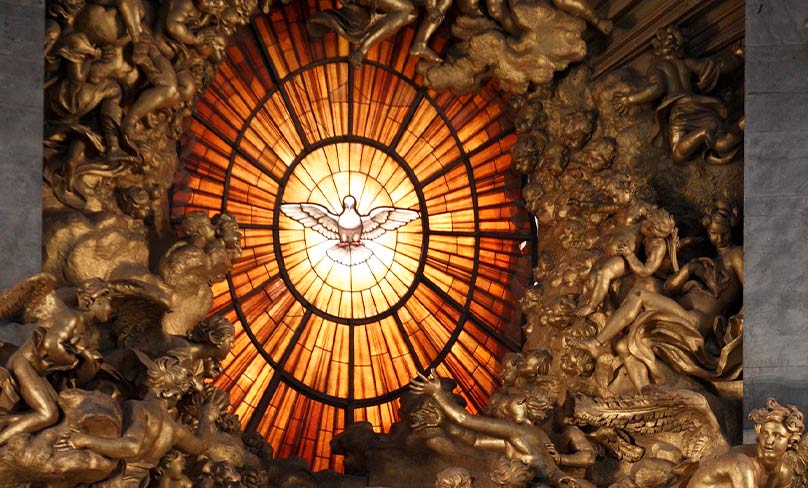
“Dear Father, Can you please tell me when the Church first began to celebrate the feast of Pentecost as a Christian feast? I know the Jews celebrated it as one of their great feasts.”
As you say, Pentecost was a Jewish feast, as it remains today, going back to the time of Moses. It commemorated two events: the end of the harvest 50 days after the Passover, for which it was called the Festival of Weeks, and the Giving of the Torah, or Law, to Moses on Mt Sinai fifty days after the first Passover, when Moses led the Israelites out of Egypt.
For this feast all males were to go up to Jerusalem, which explains why the Acts of the Apostles tell us that “there were dwelling in Jerusalem Jews, devout men from every nation under heaven” (Acts 2:5). For a fuller treatment of the origin and significance of the Jewish feast of Pentecost see my book Question Time 3, q. 434.
When Christians began to celebrate Pentecost to commemorate the coming of the Holy Spirit on the apostles on the very day of the Jewish feast, they kept the name Pentecost, from the Greek word meaning “fiftieth”, because it came 50 days after Easter.
In English the feast is also known as Whitsunday, or White Sunday, because on that day the newly baptised wore their white garments for the services.
It is not known whether or how Pentecost was celebrated by Christians in the first two centuries. But it is likely that it was celebrated in some way very early on, since it came 50 days after the Resurrection of Christ on Easter Sunday, and the liturgical celebration of the feasts of Our Lord began with Easter in apostolic times.
The first mention of Pentecost as a Christian feast was made in the 3rd Century by Origen and Tertullian. Tertullian referred to it as a well-established feast and as the second day for the solemn baptism of catechumens, following Easter (De Bapt., 19).
In the 4th Century the bishop historian Eusebius of Caesaria called it “all-blessed and all-holy, the feast of feasts” (Vita Constantini, IV, 64). And early in the 5th Century St John Chrysostom in a sermon on Pentecost said: “Today we have arrived at the peak of all blessings, we have reached the capital [metropolis] of feasts, we have obtained the very fruit of our Lord’s promise” (In Pent. Hom., 2).
At about the same time St Augustine called “solemn anniversaries” of the Lord the “passion, resurrection and ascension, and the coming of the Holy Spirit” (Epist. ad Inquis. Januarii, 54, 1).

In the early centuries only the day of Pentecost itself was celebrated in the Western Church. After the 7th Century, however, the whole week following the feast, the octave, came to be celebrated in a festive way. Throughout the octave law courts did not sit and servile work was forbidden.
Later the Council of Constance in 1094 limited this prohibition of work to three days. In 1771 Pope Clement XIV declared the Tuesday of the octave to be no longer a holy day and in 1911 Pope St Pius X abolished Monday as a holy day of obligation.
As early as the 3rd Century in the West the vigil service in the evening before Pentecost Sunday included a solemn rite of Baptism of new converts.
The catechumens gathered in church on Saturday afternoon for prayers and preparation and the bishop blessed the baptismal water. The ceremonies followed closely those of the Easter Vigil.
In the West the vigil of Pentecost was a day of fasting in preparation for the great feast.
The East observed the ancient tradition of celebrating the full 50 days from Easter to Pentecost without penance, although the Vesper service in the evening of the feast assumed a penitential character to atone for excesses committed during the Easter season.
In the Mass the ancient sequence Veni Sancte Spiritus (Come, Holy Spirit) was used on each day of the octave. It appeared first in liturgical books around the year 1200 and was ascribed variously to Pope Innocent III, King Robert of France, Pope St Gregory the Great and Cardinal Stephen Langton. The beautiful hymn Veni Creator Spiritus, probably written in the 9th Century by Rabanus Maurus, Archbishop of Mainz, was used in the Divine Office from the end of the 10th Century.
Related stories:
